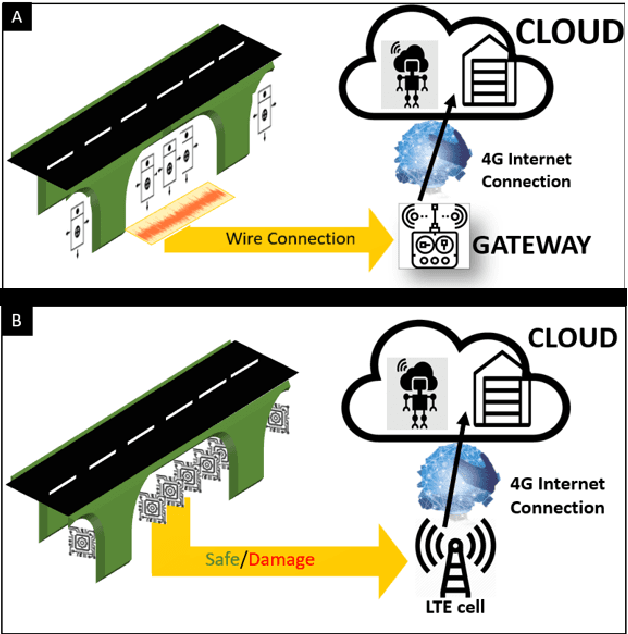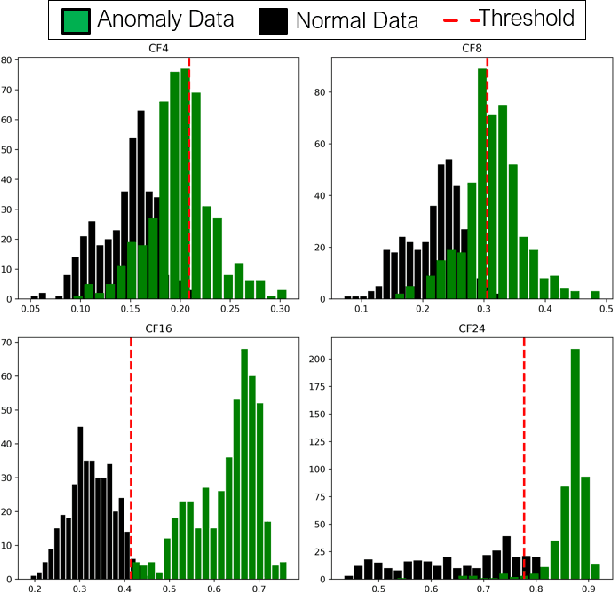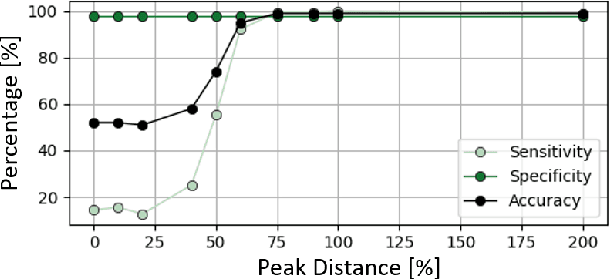Amirhossein Moallemi
Parallelization is All System Identification Needs: End-to-end Vibration Diagnostics on a multi-core RISC-V edge device
Apr 07, 2025Abstract:The early detection of structural malfunctions requires the installation of real-time monitoring systems ensuring continuous access to the damage-sensitive information; nevertheless, it can generate bottlenecks in terms of bandwidth and storage. Deploying data reduction techniques at the edge is recognized as a proficient solution to reduce the system's network traffic. However, the most effective solutions currently employed for the purpose are based on memory and power-hungry algorithms, making their embedding on resource-constrained devices very challenging; this is the case of vibration data reduction based on System Identification models. This paper presents PARSY-VDD, a fully optimized PArallel end-to-end software framework based on SYstem identification for Vibration-based Damage Detection, as a suitable solution to perform damage detection at the edge in a time and energy-efficient manner, avoiding streaming raw data to the cloud. We evaluate the damage detection capabilities of PARSY-VDD with two benchmarks: a bridge and a wind turbine blade, showcasing the robustness of the end-to-end approach. Then, we deploy PARSY-VDD on both commercial single-core and a specific multi-core edge device. We introduce an architecture-agnostic algorithmic optimization for SysId, improving the execution by 90x and reducing the consumption by 85x compared with the state-of-the-art SysId implementation on GAP9. Results show that by utilizing the unique parallel computing capabilities of GAP9, the execution time is 751{\mu}s with the high-performance multi-core solution operating at 370MHz and 0.8V, while the energy consumption is 37{\mu}J with the low-power solution operating at 240MHz and 0.65V. Compared with other single-core implementations based on STM32 microcontrollers, the GAP9 high-performance configuration is 76x faster, while the low-power configuration is 360x more energy efficient.
Exploring Scalable, Distributed Real-Time Anomaly Detection for Bridge Health Monitoring
Mar 10, 2022



Abstract:Modern real-time Structural Health Monitoring systems can generate a considerable amount of information that must be processed and evaluated for detecting early anomalies and generating prompt warnings and alarms about the civil infrastructure conditions. The current cloud-based solutions cannot scale if the raw data has to be collected from thousands of buildings. This paper presents a full-stack deployment of an efficient and scalable anomaly detection pipeline for SHM systems which does not require sending raw data to the cloud but relies on edge computation. First, we benchmark three algorithmic approaches of anomaly detection, i.e., Principal Component Analysis (PCA), Fully-Connected AutoEncoder (FC-AE), and Convolutional AutoEncoder (C-AE). Then, we deploy them on an edge-sensor, the STM32L4, with limited computing capabilities. Our approach decreases network traffic by $\approx8\cdot10^5\times$ , from 780KB/hour to less than 10 Bytes/hour for a single installation and minimize network and cloud resource utilization, enabling the scaling of the monitoring infrastructure. A real-life case study, a highway bridge in Italy, demonstrates that combining near-sensor computation of anomaly detection algorithms, smart pre-processing, and low-power wide-area network protocols (LPWAN) we can greatly reduce data communication and cloud computing costs, while anomaly detection accuracy is not adversely affected.
 Add to Chrome
Add to Chrome Add to Firefox
Add to Firefox Add to Edge
Add to Edge